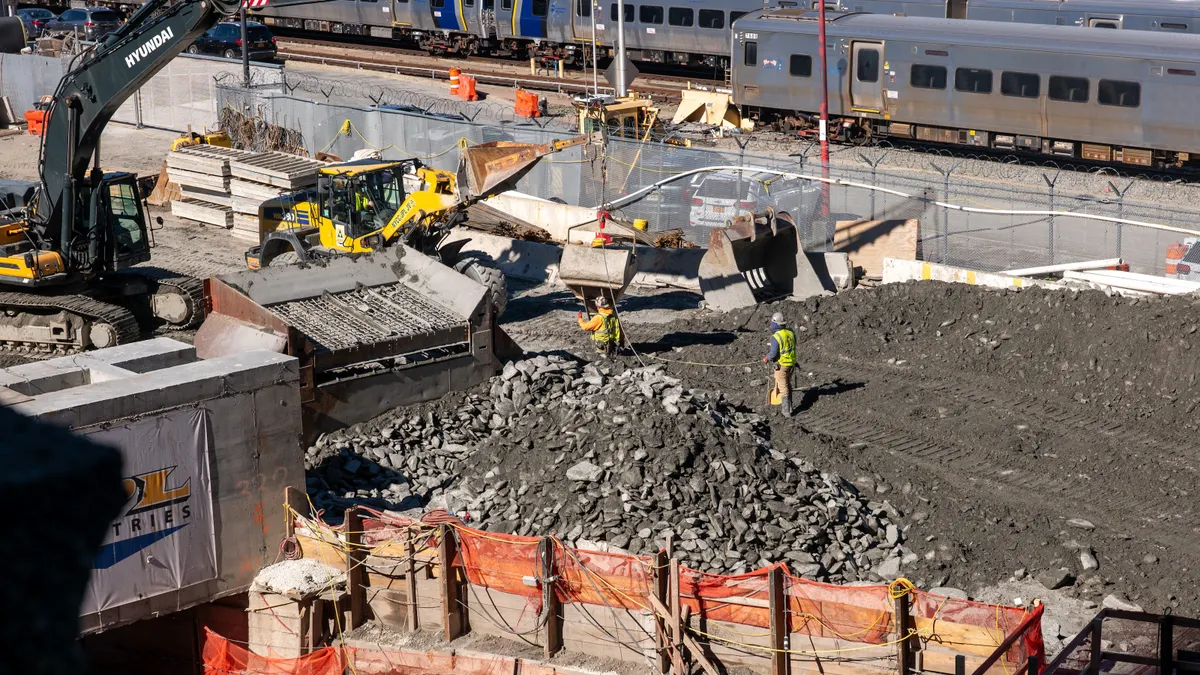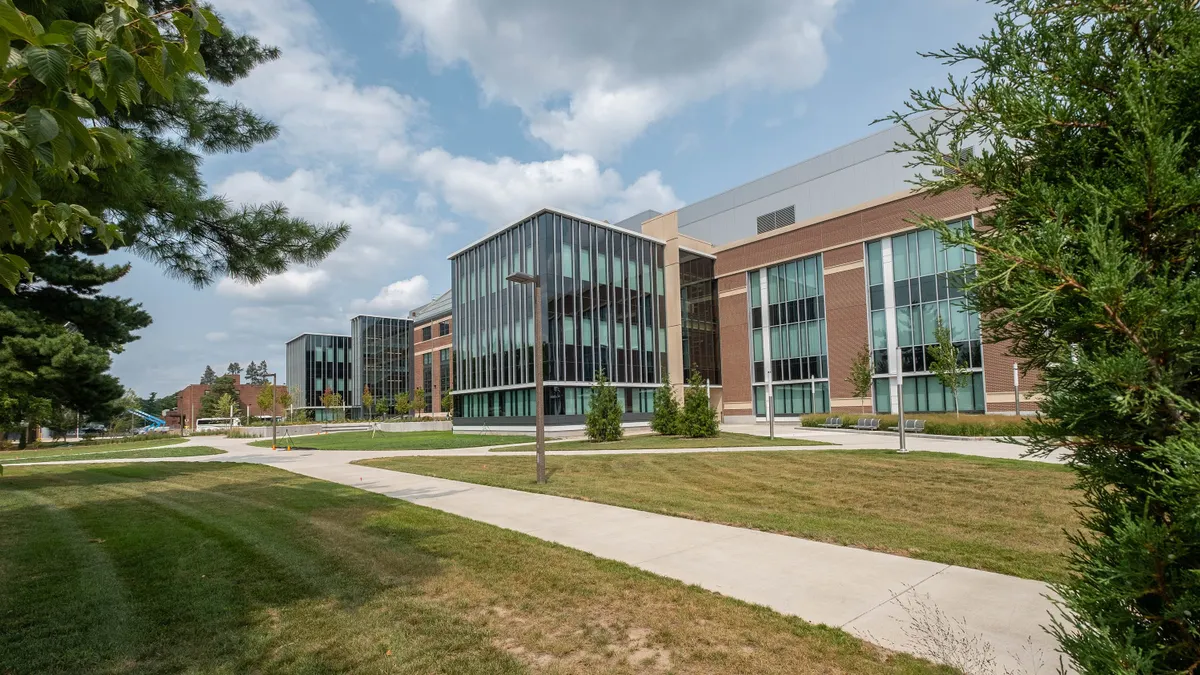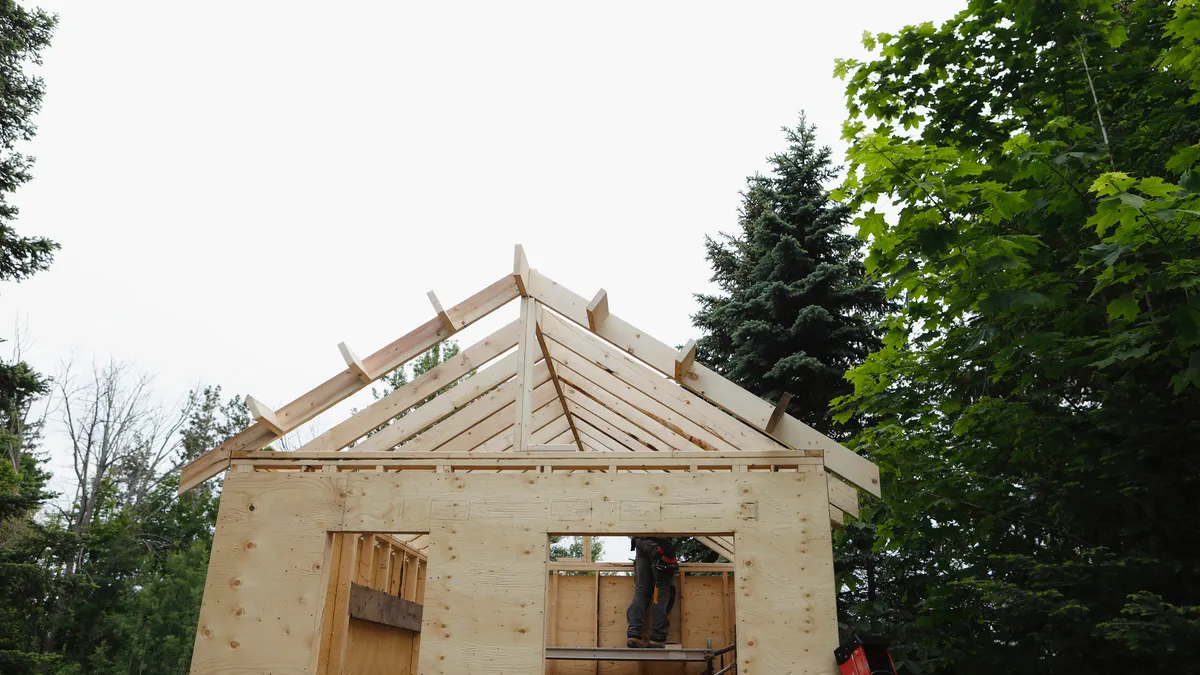Mahesh Ramanujam worked for more than a decade at the U.S. Green Building Council, serving as president and CEO from 2016 to 2021.
For the Biden-Harris administration to achieve the emissions reductions goals it set for itself — let alone constructively respond to the United Nation’s recent climate assessments in the short time we have left — the White House will have to circumvent gridlock on Capitol Hill.
And it would appear the Biden-Harris administration appreciates as much. On one hand, the White House has set out a “whole of government approach” to climate action, both to eliminate by 2050 the federal government’s own planet-warming emissions footprint and to increase its resilience against the effects of climate change. On the other hand, the White House is looking outside the confines of Washington, effectively delegating greater responsibility for climate action to state and local governments and, importantly, coordinating climate policy with them.
The power of this two-tiered approach lies in its potential to merge federal leadership and fiscal resources with lower governments’ capacities for experimentation and execution. This will give the private sector the certainty and direction to deploy the capital resources required to close the financing gap, which are necessary to achieve national climate goals.
Success will require the White House to harmonize lower governments’ decarbonization goals and corresponding policies, and incorporate them with the climate-alignment goals, methods and standards employed by the private sector.
This is what makes the National Building Performance Standards Coalition that was formed this year so important. Billed as a "first-of-its-kind" partnership between the White House and 33 state and local governments, its mandate is to deliver cleaner, healthier and more affordable buildings, with the goal of advancing building performance policies in each of the coalition members’ jurisdictions by Earth Day 2024.
This is a tremendous step in the right direction. For starters, the operational emissions of the national building stock have proven difficult to rein in, accounting for some 30% of U.S. annual emissions. Further, building performance standards like those either established or under development by many of the coalition’s members are an effective mechanism for driving both building decarbonization and occupant wellbeing.
And while they may be an emerging climate policy, claims to their uptake and effectiveness are well evidenced. One need only look at the ubiquity of performance-based building standards, ratings and certifications made available by organizations like the U.S. Green Building Council and the International WELL Building Institute.
Fortunately, it appears the White House and its coalition partners not only recognize these advantages but also appreciate that there’s no "one-size-fits-all" standard. Differences in jurisdictions’ climates and environments, energy resource distributions, material supply chains, legacy building stock compositions, community preferences, market dynamics and other variables add complexity to the design, development and implementation of a building performance standard. This is what makes state and local implementation so crucial, a point President Biden underscored when announcing the coalition.
Without unequivocal federal leadership — and conclusive, universal building performance targets with clear definitions for their corresponding metrics — the White House risks perpetuating the piecemeal approaches with inconsistent levels of ambition that U.S. state and local governments have taken to building decarbonization thus far.
Building performance standards can do more
Through the National BPS Coalition, the White House and its partners should expand the scope of its mandate and target outputs. Specifically, they should look to develop standards that go beyond legacy buildings. For instance, by standardizing methods for quantifying physical climate-related risks to buildings, setting clear targets for climate resilience and advancing best practices for adaptation, the National BPS Coalition can actually exceed its decarbonization, environmental justice and public health goals.
But despite what its name may imply, the National BPS Coalition as currently structured will neither produce nor effectuate a national building performance standard, potentially limiting its impact. Keeping with the Biden-Harris administration’s "whole of government approach," however, the White House can enact federal policies that either facilitate or oblige state and local governments to pursue more ambitious standards for their respective jurisdictions.
On facilitation, the U.S. government should more aggressively leverage its unique capacity to drive innovation, commercialization and, ultimately, cost reductions of building energy efficiency products and services. One way to do this is by following through on its intent to set building performance standards for federal buildings and align federal procurement practices with climate goals, actions that would send unambiguous and forceful market signals. Further, the White House can better inform state and local policymakers of the need for action by accelerating the development and distribution of the physical climate risk databases, climate risk mitigation best practices and climate-related screening tools for public spending that it says it’s developing.
And on obligation, the U.S. government should consider making grants for lower governments more prescriptive. The aim would be to support technology purchases and retrofits for state and local government facilities that stand to reduce emissions and boost resilience in alignment with national goals.
Regardless of the tactics, the strategy remains the same. The Biden-Harris administration has a responsibility to protect the U.S. economy and its participants from the adverse effects of climate change. And if fulfilling that duty, at least for now, requires a circumvention of Congress, then it’s imperative that executive power and lower governments supplement each other rather than diverge, thereby laying the groundwork for more substantive intervention in the future.
Contributed pieces do not reflect an editorial position by Smart Cities Dive.
Do you have an opinion on a similar issue or another topic Smart Cities Dive is covering? Submit an op-ed.



















